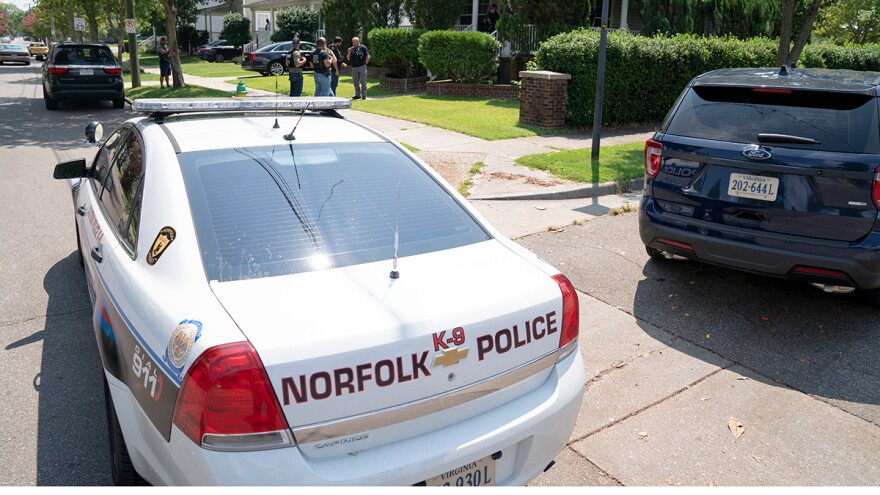Crime rates in Norfolk’s downtown district dropped 24% in 2023, according to police department data.
That follows a substantial uptick during the COVID-19 pandemic. Norfolk’s Commonwealth’s Attorney Ramin Fatehi told WHRO there are several things that contribute to crime decreases.
Fatehi spoke with WHRO’s Barry Graham on Weekly Edition.
Barry Graham: In 2021 and 2022, crime increased. What were the real causes that drove that increase?
Ramin Fatehi: Over the last few years, two major things have driven a national increase in violent crime and that increase here in Norfolk. The first is COVID and the second is guns.
COVID caused mass social dislocation all over the country. People were out of work, they became financially insecure. Schools closed, rec centers closed, homeless shelters came under pressure, domestic violence shelters closed.
All of those pressures, and in addition to the mass death that we saw during COVID, caused stress and stress caused people to act out, and commit acts of violence in ways that they hadn't before COVID.
In addition, during COVID, we saw an additional 50 million guns go [into] circulation nationally. And what we see is that the more guns we have in circulation, the more violent crimes turn into fatal crime. And as America's numbers went up, Norfolk's numbers went up with them.
B.G: Let’s talk about community engagement. What role does that play in decreasing crime?
R.F: Community engagement has two benefits. The first of it is to build trust and to make people feel as if they are citizens of their city or their county. Those people feel as if their government works for them. It’s very hard to measure these effects, but people will be better citizens.
The more practical result of community engagement, however, is to increase what is known as the clearance rate. The clearance rate is the rate at which a given law enforcement agency is able to identify and arrest someone for a crime.
Those clearance rates nationally have been dropping for the past 50 years as people lose trust in the criminal justice system, and the criminal justice system has a reckoning for the police and prosecutorial abuses of the past.
The more people distrust the system, the less likely they are to pick up the phone and call and report themselves as witnesses, [the] less likely they are to come to court and testify as witnesses, the less likely they are to be jurors and the less likely they are as jurors to be convinced beyond a reasonable doubt that somebody has committed a crime.
Community engagement is an effort to get people to help the police so the police can make them arrest them so that we, as prosecutors, can prosecute the case and hold people accountable for violence.
B.G: We're seeing a historical drop in crime here inside the city of Norfolk as well as nationally. How do we sustain this?
R.F: As a city and as a nation, the way that we sustain these positive trends is by dealing with the root causes of criminogenic behavior. It is by providing … plentiful blue collar jobs, so that working people have roofs over their heads, can start families.
It is by providing better nutrition and more financial security to children, by providing better schools, better transportation and better health outcomes.
The biggest anti-crime program on Earth is prosperity. What we can do here in Norfolk is to continue to deconcentrate poverty.
It is also to make smart use of technology and to leverage the power of the internet and the power of big data to make police officers’ work more efficient and to allow us to do so while increasing our respect for civil rights.
But unfortunately, or fortunately, whatever rising tide lifts all boats nationally will lift Norfolk. And if the tide falls, we will fall with it.

